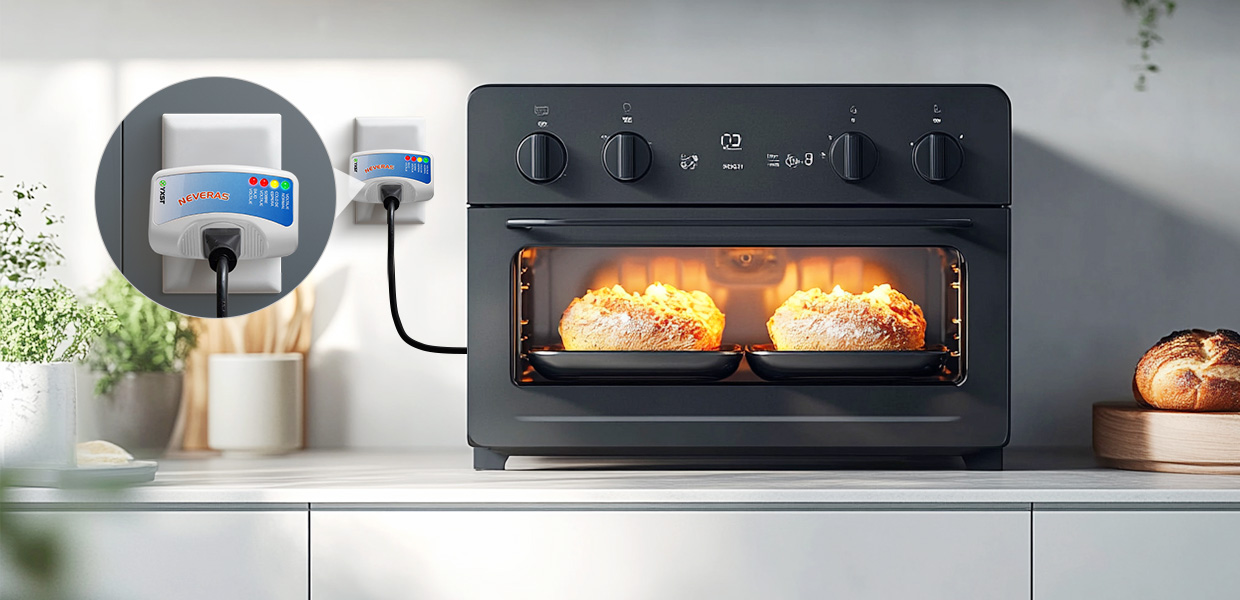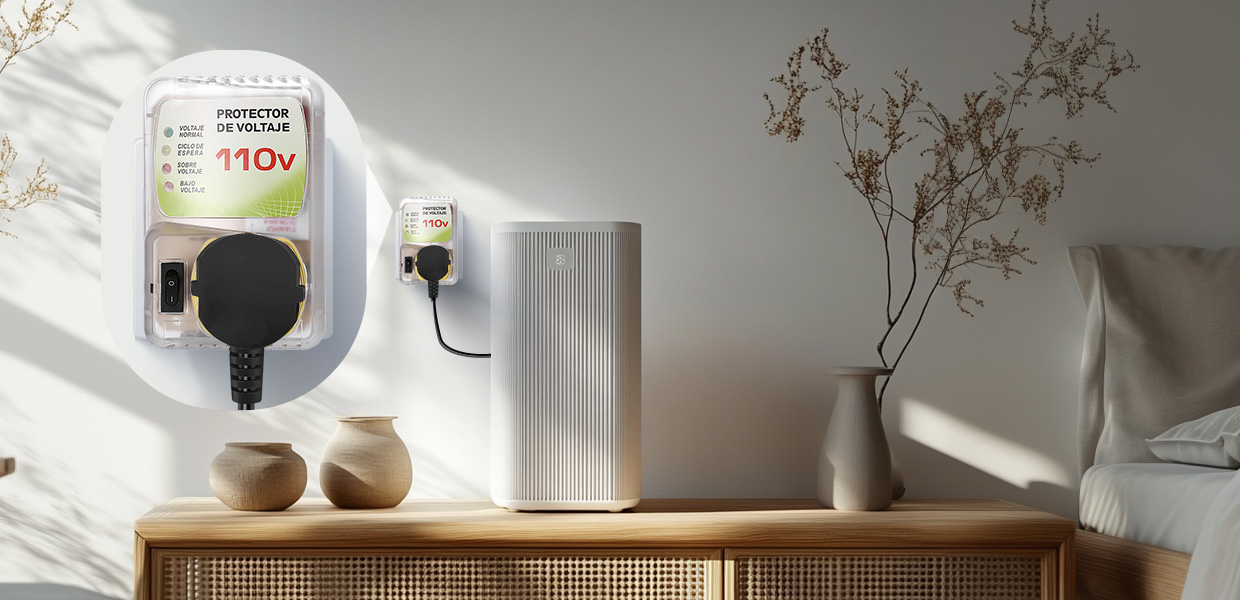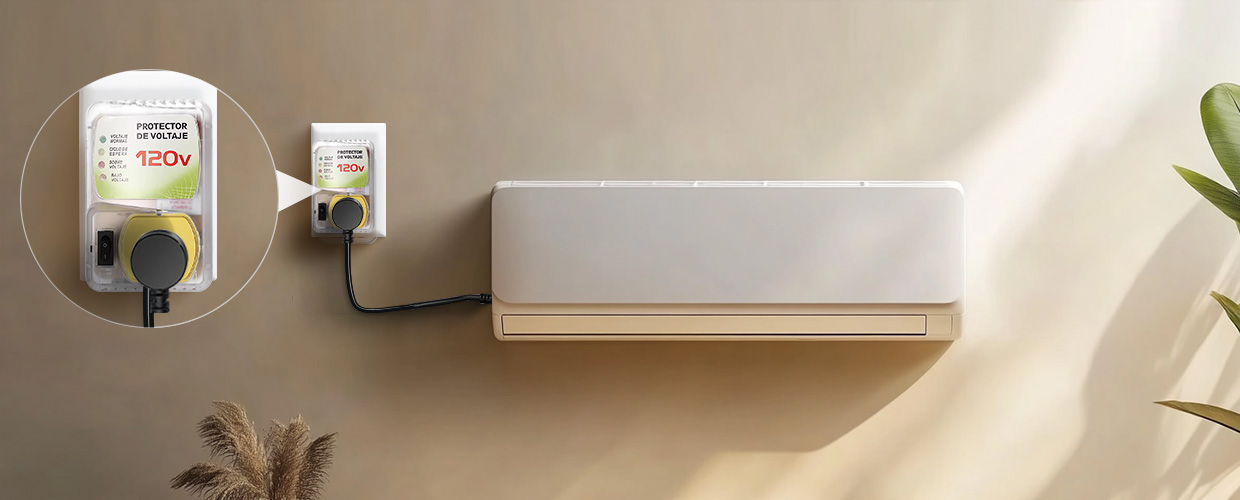Voltage fluctuation protector: safe operation of appliances
Date:2025-04-01 Click:530
1. The harm of voltage fluctuation to household appliances and the need for protection
- Instantaneous overvoltage can cause integrated circuits to burn out (such as computer motherboards)
- Continuous undervoltage may cause motor overheating (such as refrigerator compressors)
- Surge shocks can damage sensitive components (such as router chipsets)
Studies have shown that when voltage fluctuations exceed ±10%, the average life of electrical appliances is shortened by 30%. Therefore, voltage fluctuation protectors have become core devices to ensure the safety of household appliances through real-time monitoring, rapid disconnection and intelligent adjustment functions.
2. Classification of household appliances and matching of an ampere of adapter protector
2.1 Low-power equipment (≤2000W) is suitable for 12-15A protector
- 12A group: electric kettle (1800W), toaster (800W), soy milk machine (1000W)
- 13A group: microwave oven (1300W), juicer (1200W), laptop power supply (65W)
- 15A group: electric frying pan (1500W), mini electric oven (1400W), waffle maker (1100W)
Technical advice: It is recommended to use a protector with an automatic reset function for such equipment to avoid frequent manual operation.
2.2 Medium power equipment (2001-3500W) is suitable for 20A protector
- Electric heater (2000W), wall-mounted air conditioner (2500W), washing machine (2200W)
- Food processor (2800W), espresso machine (2100W), dryer (3000W)
Special design: For motor equipment (such as washing machines), a protector with a response time of ≤10ns is required to suppress the startup surge.
2.3 High-power equipment (≥3501W) is suitable for 30A protector
- High-power electric water heater (4000W), large electric oven (3500W), central air conditioner (5000W)
- High-capacity refrigerator (3800W), induction cooker (3500W), instant electric water heater (8500W)
Safety specification: According to the GB4706.1 standard, such equipment must be equipped with double insulation protection, and the leakage current must be ≤0.75mA.
3. Typical application scenario protection scheme
3.1 Kitchen appliance cluster protection
Equipment combination: microwave oven (13A) + electric oven (30A) + dishwasher (15A)
Scheme design:
1. 30A SPD (Up≤1.5kV) is configured for the main line
2. 15A fast circuit breaker is used for the branch circuit[36],
3. N-PE protection mode is added to suppress common mode interference[3]
3.2 Audio and video entertainment system protection
Equipment combination: TV (1.5A) + audio (5A) + game console (10A)
Technical points:
- Use Type III SPD with Up≤800V
- Configure independent grounding resistance ≤4Ω
- Add EMI filter (30MHz-1GHz)
4. Selection and installation specifications
4.1 Four-step selection method
1. Power calculation: ∑(equipment rated power × 1.2)/220V = required ampere
2. Environmental adaptation: select IP65 for kitchen and IP68 for bathroom
3. Compatibility verification: confirm that the protector Uc value matches the grid fluctuation range (e.g. select Uc ≥ 300V for rural areas)
4. Certification verification: must have CE and RoHS certification
4.2 Installation specifications
- Wiring standard: phase line length ≤ 0.5m, ground line length ≤ 1m[3],
- Spacing requirements: horizontal distance from gas pipeline ≥ 300mm,
- Maintenance cycle: test the tripping function monthly and replace the degradation indication module annually
By scientifically selecting voltage fluctuation protectors, the life of home appliances can be extended by more than 40% and energy consumption can be reduced by 15%. It is recommended that users select a protection solution with the corresponding ampere level according to the power characteristics of the equipment, and conduct regular system inspections to build a safe and efficient power environment.




